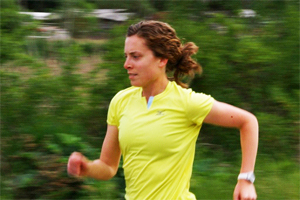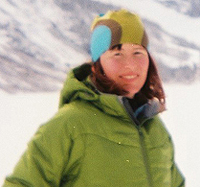ENDURrun Stage 7 – the last frontier, August 19, 2012 : The Marathon
ENDURrun Stage 7 – the last frontier, August 19, 2012 : The Marathon
I’ve learned that finishing a marathon isn’t just an athletic achievement. It’s a state of mind; a state of mind that says anything is possible.– John Hanc
Your toughness is made up of equal parts persistence and experience. You don’t so much outrun your opponents as outlast and outsmart them, and the toughest opponent of all is the one inside your head. Joe Henderson
Our lives are not determined by what happens to us, but how we react to what happens; not by what life brings us, but by the attitude we bring to life.” – Unknown
Still having issues with importing pictures in WP so text is all you get for now. (sorry)
After 6 days of running in and on various terrain, it’s come down to this. The final stage, which starts where it all began a mere week ago.
The marathon. The longest distance covered in a stage in the ENDURrun, but arguably not the hardest. The route is much like the half marathon that started the ENDURrun; rolling country roads, with a small out and back portion. Even the start and finish line is exactly where the half marathon started. After what we’ve been through, you would think that this stage is relatively simple. Just straight forward running. No mountains to climb, no trails to traverse, no major hills to contend with. But as anyone who’s ever run a marathon will tell you, it is a very unpredictable. Many things can, and do, happen on a marathon.
The previous evening we had all gathered at Lloyd’s house for a BBQ held for all the participants and their families. It was a social event, designed for us to all celebrate what we’ve accomplished as a group, to socialize, and to enjoy some of the home-cooked food that we’d preferred over the course of the week. The mood was light, but you could see that people were still a bit nervous with what was still coming, especially the newbies. The non leader competition is still present. After the party we went back to the dorm rooms at King’s Court where we were staying and packed up everything; race time was 7:30am, so got a ride with Paul and arrived at the starting line around 7:15am.
The start line takes place just outside a park, which also doubles as the food serving area.
Soon, it was time to get to the start line and start the race. Lloyd did his usual roll call, gave us our last minute instructions, and off we went for two loops of 21.1km each
I came through the the first loop at the start/finish in 2 hours and 5 minutes. This was my “plan A” goal to try and maintain a 6 minute per km pace. I felt quite fresh and needed to stay focused and not beat myself up as there was still 2 hours of running left. I must say that the past 2 months of solid weight lifting has helped my arm swings, body positioning and running form.
One of my worries about the marathon was that it is can be a singular run, meaning that I am on my own for most of the distance, especially the second loop around. The second loop, can be the most difficult, because you’re seeing everything you’ve done before. Mentally, you know how long that loop is, and that you have to do it all over again. and you know where the rises are.
I was passing some of the guest runners and on the straightaway, could see other runners in the distance.
I spotted Ed at the first turnaround (remember he is about 4 to 5 minutes ahead of me in the standings.) Onward we ran. Still keeping him in sight and using RFM (relentless forward motion) I finally joined him at the 30km mark. We ran together for a bit, and then hit a hill, so I forged on and wanted to get the run over with so I pushed the pace a bit more.
There is an out and back area between 38 and 39 km so on my way out, there was Ed looming behind me.
The last 3km does have two significant hills, and I had to run both of them.
The term Running is relative as my pace times began getting slower (And I splashed orange Gatorade in my eye which stung a bit)
Finally, the home stretch was in sight. The ENDURrunners who’d finished their run, all started to cheer me in, and I broke the tape (yes, they had finisher’s tape for EVERY runner) at 4:20 (one minute faster than last year.
I had DONE IT!
Another ENDURrun finished. I was ONE TOUGH RUNNER (again)
But hey I felt great.(after sitting and resting for about 3 minutes) No blisters, no soreness, just a bit tired.
Ed finished about 5 minutes after me, and the final results had me ahead in the standing by 40 seconds. YAY
Next year…..well…. lets see how the year progresses for training.
Total time to run 100 miles
16 hours 45 minutes and 16 seconds
2011 – 16:51:20
2010- 16:42:35
2009- dnf (but we won’t go there)
2008 15:03:16
2007 14:43:42
You may notice the times they are a changin’ but I am still having a GREAT time.
.




 The time to return to school is just around the corner and you’ve spent all summer training and chasing personal bests on the roads and trails. Did you also realize that establishing these habits is also going to make you smarter? More specifically, aerobic exercise (such as running) has been shown to have positive effects on our ability to reason and process thoughts. Dr. Paul van Donkelaar is a professor of neuroscience at the University of British Columbia Okanagan Campus in the school of Health and Exercise Sciences, met with me to discuss how exercise leads to improved cognitive functioning. Once an elite rower, Dr. van Donkelaar is now an avid runner who likes to train and race for health, to be social and enjoy the occasional beer 😉
The time to return to school is just around the corner and you’ve spent all summer training and chasing personal bests on the roads and trails. Did you also realize that establishing these habits is also going to make you smarter? More specifically, aerobic exercise (such as running) has been shown to have positive effects on our ability to reason and process thoughts. Dr. Paul van Donkelaar is a professor of neuroscience at the University of British Columbia Okanagan Campus in the school of Health and Exercise Sciences, met with me to discuss how exercise leads to improved cognitive functioning. Once an elite rower, Dr. van Donkelaar is now an avid runner who likes to train and race for health, to be social and enjoy the occasional beer 😉 Nikki Reiter holds a master’s degree in biomechanics and is a Mizuno Running Brand Ambassador and the Women’s Cross Country Running Head Coach at the University of British Columbia Okanagan campus in Kelowna, BC. She is also the Laboratory Coordinator in the School of Health and Exercise Sciences at UBC Okanagan where she facilitates undergraduate laboratory learning.
Nikki Reiter holds a master’s degree in biomechanics and is a Mizuno Running Brand Ambassador and the Women’s Cross Country Running Head Coach at the University of British Columbia Okanagan campus in Kelowna, BC. She is also the Laboratory Coordinator in the School of Health and Exercise Sciences at UBC Okanagan where she facilitates undergraduate laboratory learning.


 By: Magi Scallion
By: Magi Scallion Born in Nova Scotia and emigrating to British Columbia via Ontario and Alberta, Magi has been running the entire way. Primarily defined as a cross country ski racer, Magi has competed nationally and internationally in that sport. The highlight of her career was competing in the World University Games and the World Cup races in Canada in 2007. Cross country skiers rely heavily on running for cross training and Magi has become an accomplished trail and mountain runner, representing Canada at the World Mountain Running Championships in 2005 and the winning numerous national championships medals.
Born in Nova Scotia and emigrating to British Columbia via Ontario and Alberta, Magi has been running the entire way. Primarily defined as a cross country ski racer, Magi has competed nationally and internationally in that sport. The highlight of her career was competing in the World University Games and the World Cup races in Canada in 2007. Cross country skiers rely heavily on running for cross training and Magi has become an accomplished trail and mountain runner, representing Canada at the World Mountain Running Championships in 2005 and the winning numerous national championships medals.  Our Magazine
Our Magazine
